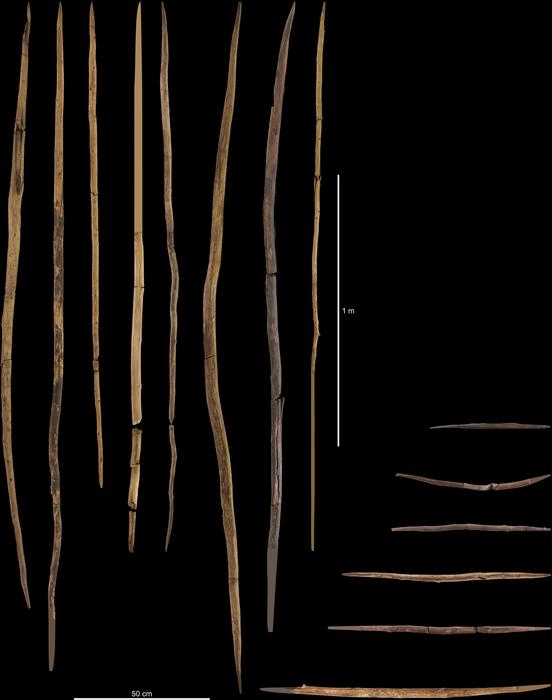A detailed study of the richest haul of Paleolithic wooden tools has provided unmatched insight into the lifestyles of Neanderthals living a little over 300,000 years ago in what is now northern Germany.
Hominins have been using stone tools for at least 3 million years, and probably noticed wood could do some useful things about the same time. Unlike stone, wood seldom survives the ages so it’s rare we have direct evidence of this, although the discovery of a 476,000-year-old wooden structure certainly sent shockwaves through archaeology last year.
One exception is at Schöningen, where an astonishing 187 wooden artifacts have been found preserved in what is known as the “Spear Horizon”. The horizon dates to around the point where early Neanderthals were replacing Homo heidelbergensis in Europe.
These items have already transformed our view of these early humans, showing them to have been sophisticated hunters, rather than the scavengers once imagined. The remnants remain possibly the best guide we have to how this branch of the human family tree lived, and more generally how hunter-gatherers thrived in Europe during interglacial periods. The same site has also revealed other items such as sabre-toothed cat bones turned into tools.
The Spear Horizon was discovered in 1994, but finding all it has to offer and analyzing these precious discoveries has proven a slow process.
In a newly published study, Dr Dirk Leder of the Lower Saxony State Office for Cultural Heritage and colleagues provide the first comprehensive report on the items found there up to 2008.
While the site’s spears are its most famous items, the authors report only 20-25 were hunting weapons. Split woods with pointed or rounded ends used for domestic purposes provided a larger part of the sample. These resemble items used by more recent hunter-gatherers to process animal hides, which at the site were mostly horse. Many other items’ purposes cannot be identified.

Spears and throwing sticks are a minority of the items at the site, but their size makes them stand out.
Image Credit: Niedersächsisches Landesamt für Denkmalpflege (NLD)
The analysis reveals the site’s inhabitants were willing to go a long way for the right tools. Woods found at the site are primarily spruce, willow, and pine, although a range of other types are also found there. However, most of these show no sign of having been processed by humans.
The tools overwhelmingly came from spruce trees, with almost a quarter having been pine. Besides providing a guide on which woods to use if you’re ever stuck in the wilderness, the finding is significant because neither spruce nor pine were available at the lakeside site. Instead, they would have been collected 3-5 kilometers (2-3 miles) away on a nearby mountain, or even further afield.
Leder and co-authors identify two sets of processes to make the items. In one, a spruce or pine tree was cut down so its branches and bark could be removed, and its trunk turned into a spear or throwing stick. Some split woods appear to have been recycled from these items when they were no longer up to their original purpose.
The second process turned knot-free wood from near the base of spruce trees directly into split woods for domestic uses.

Part of the spear point of Spear V, showing the tree’s annual rings and the work done to create surface facets and a flattened knot.
Image Credit: Niedersächsisches Landesamt für Denkmalpflege (NLD)
The complexity of the processing provides an important data point in the development of Pleistocene technology, which became increasingly sophisticated over millennia. “Increasing technological complexity,” the authors note, “has been interpreted as a proxy of cognitive abilities and increasing reliance on social learning.” The careful choice of the best woods, even though it meant a long round trip to reach and process them, speaks to this.
The items survived when so many other tools have decayed in part because the lakeshore expanded as a result of the retreating ice sheet, water-logging the soil and preserving organic material.
The study is open access in Proceedings of the National Academy of Sciences.
Source Link: 300,000-Year-Old Wooden Tools Provide Rare Insight Into Neanderthal Society